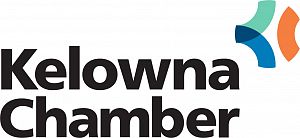New Provincial Paid Sick Day Policy - What You Need to Know
Paid sick leave will be standard for workers in British Columbia beginning Jan. 1, 2022, with a minimum of five paid sick days each year.
BC becomes the first province in Canada to legislate this level of paid time off for workers who fall ill. This new workplace protection applies to all workers covered by the Employment Standards Act, including part-time workers.
Quick Facts:
• The paid sick leave protection will apply to all workers covered by the Employment Standards Act (ESA), including part-time employees. The ESA does not cover federally regulated sectors, self-employed workers and employees in professions and occupations explicitly excluded from the ESA, i.e., doctors, accountants and lawyers.
• The paid sick leave changes replace the May 2021 temporary COVID-19 paid sick leave program for up to three days of leave which runs until Dec. 31, 2021.
• The new program starts Jan. 1, 2022.
• There is no grace period for the start date of the program.
• There is no government reimbursement to employers for the new program.
• Employees who fall under the Employment Standards Act in BC will be eligible to receive five employer-paid sick days following the completion of their probationary period (90 days of employment).
• The program applies to full-time, part-time, and fixed-term employees, as well as temporary foreign workers. The Paid Sick Leave entitlement is not reduced or limited for part-time or temporary employees.
Examples:
Paid sick days are based on an average day’s wages of the last month of work. Here are a few examples:
• Full time example: Someone working 8 hours per day and five days per week will get 5 paid days of 8 hours each, even if the person works a bit of overtime from time to time. They will also get an additional 3 days of sick time without pay. (You can always offer more paid time off. Five days are the minimum).
• Part time example: Someone working 6 hours a day four days per week, will get five sick days of 6 hours each.
• Casual example: If you have someone who works casually and hasn’t worked in a month, no sick pay will be required if they miss a day in their first few weeks back at work. However, if they work casually anywhere from 2-8 hours each time, you will need to track time each day and then take an average of the hours by days worked to calculate an average day’s pay.
o When calculating an average day’s pay, include wages/salary, commission, stat holiday pay and paid vacation. Overtime is excluded however, so if someone works a lot of OT and then takes a sick day, you would pay for a normal workday without OT.
How the new provision works:
• An employer is entitled to request reasonably sufficient proof that the employee is in fact entitled to Paid Sick Leave. In most cases, this means that an employer can request limited medical evidence (i.e., a doctor’s note) in support of the employee’s leave. Requiring proof of illness is a business decision and will vary depending on the operation/workplace.
• There is no requirement that Paid Sick Leave days be taken consecutively. Any time taken off qualifies as a day for the purposes of Paid Sick Leave. If an employee works a half-day and uses their Paid Sick Leave for the other half of the day, the employer would be obligated to ensure the employee is compensated for a full day of work.
• Carry-over of sick days from one year to the next: Paid Sick Leave days do not carry over to the following year; they are not accrued over the course of the year. Paid Sick Leave days reset at the beginning of each employment year. There is no pay-out if unused.
• Defining an “illness”: For the purposes of Paid Sick Leave, the definition of “illness” is broad and includes a medical condition that prevents the employee from working. Illnesses are diagnosed by medical professionals. If the employer has concerns about the legitimacy of an illness, they are entitled to reasonably sufficient proof. Legislation in BC recognizes mental health issues as a disability/illness; if an employee is requesting Paid Sick Leave in relation to mental health, employees need to be prepared to provide supporting medical evidence.
Number of days paid and unpaid, and longer-term leaves:
• Employer/employee contracts cannot reduce the number of sick days provided under the ESA; employers can provide additional sick days if they choose.
• Employees are entitled to three unpaid sick leave days per year in addition to the five paid days, under legislation.
• If an employee continues to be unable to work due to illness past the total of 8 days paid and unpaid leave, the employee may be placed on a medical leave of absence. If the illness qualifies as a disability, the employee will be protected by the British Columbia Human Rights Code. The employee may also be entitled to other benefits, such as short or long-term disability coverage.
• An employer cannot terminate an employee’s employment because they missed work due to being sick on an Unpaid Sick Leave day.
Determining the rate of pay for Paid Sick Days:
• Employers determine the amount to pay employees for paid sick leave.
• The ESA provides a formula for determining Paid Sick Leave pay. An employer must pay an employee an amount equal to the employee’s “average day’s pay”, which is determined by dividing the employee’s total earnings in the previous 30 days by the number of days work in the previous 30 days. This calculation should include vacation pay but must exclude any overtime worked. See the Examples above.
Employers who are non-compliant
• If an employer doesn't pay their employees for sick days, they fail to comply with the Paid Sick Leave requirements in the ESA, resulting in a breach of the ESA. An employer would then be liable for paying the employee all unpaid wages (i.e., the Paid Sick Leave days), and would also be liable to pay an administrative penalty under the ESA.
• The administrative penalties under the ESA increase with each breach and range from $500 for a first breach, $2,500 for a second breach, and $10,000 for a third or subsequent breach.
Employees’ use of Paid Sick Days
• The employee must be unable to work due to a personal illness or injury, not use the day to care for a family member. There are other provisions in the ESA that entitle an employee to job protected unpaid time off to care for family members and others. A Paid Sick Leave day could be used to attend a doctor’s appointment if the employee is unable to work due to illness or injury.
Definition of an Employment year
• For employees who are immediately entitled to Paid Sick Leave as of January 1, 2022, the employment year follows the calendar year (i.e., January 1 to December 31); their year resets each year on January 1.
• For employees hired after January 1, 2022, the employment year means the year from the date of hire. For example, an employee hired on March 1, 2022, would become eligible for Paid Sick Leave on June 1, 2022 after the 90-day probationary period. Their Paid Sick Leave days subsequently reset on March 1, 2023.
Employees working under Collective Agreements
• When collective agreements do not cover paid sick leave, the ESA Paid Sick Leave provisions are deemed to form part of the collective agreement.
• If the collective agreement does address Paid Sick Leave, it must “meet or exceed” the entitlements set out in the ESA.
• Whether or not the language in a collective agreement meets or exceeds the ESA requirements is a complex issue and should be addressed with legal advice.
Learn More:
For more information about paid sick leave, visit: http://www.gov.bc.ca/PaidSickLeave
Employment Standards Branch:
https://www2.gov.bc.ca/gov/content/employment-business/employment-standards-advice/employment-standards/time-off?keyword=paid&keyword=sick&keyword=leave
With contributions from Love HR, Kelowna Chamber member.
Please reach out to the Chamber office if you have additional questions that we can address regarding this new policy at: cmiller@kelownachamber.org.

